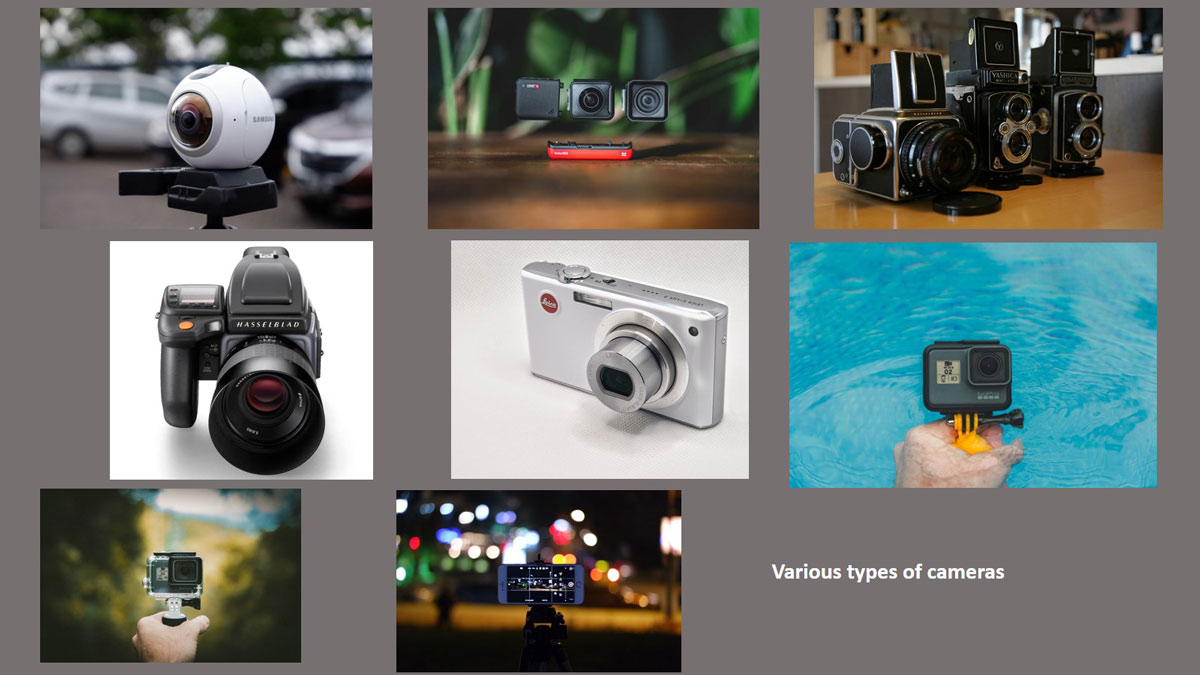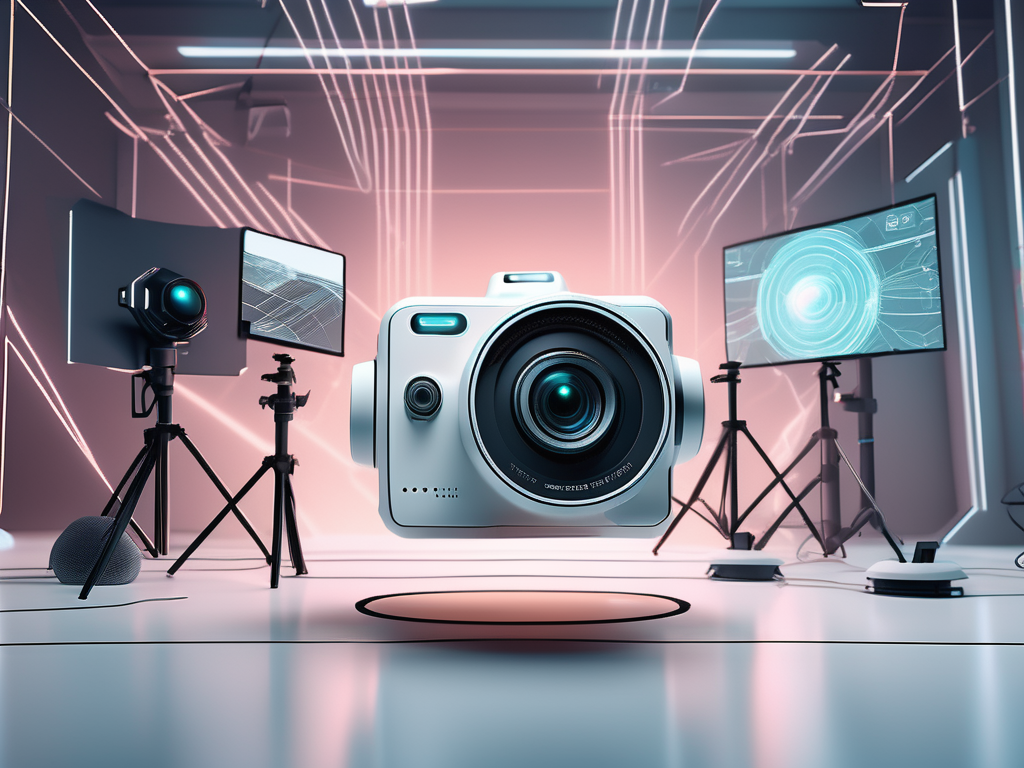Blog
The Future of Cameras: Trends and Innovations to Look Out For
The Future of Cameras: Trends and Innovations to Look Out For
The world of photography and videography is evolving rapidly, driven by technological advancements and changing consumer needs. As we look to the future, cameras are becoming more advanced, compact, and user-friendly, allowing both amateur photographers and professionals to capture breathtaking images and videos like never before. In this article, we’ll explore the most exciting trends and innovations shaping the future of cameras, from artificial intelligence to new sensor technologies. Whether you’re a photographer, videographer, or simply a camera enthusiast, these developments are worth keeping an eye on.
1. Artificial Intelligence and Computational Photography
Artificial Intelligence (AI) is already making waves in various industries, and cameras are no exception. AI-powered features are transforming how cameras capture and process images. Computational photography, which involves using algorithms to enhance or alter images, is poised to revolutionize the way we shoot and edit photos and videos.
a. AI-Powered Autofocus and Subject Tracking
One of the most exciting developments in AI is its impact on autofocus and subject tracking. Cameras are becoming smarter, with the ability to recognize faces, animals, and even specific objects in a scene. AI algorithms now enable cameras to lock focus on subjects with greater precision, even in fast-moving or low-light environments.
- Face and Eye Tracking: AI is enhancing autofocus to the point where cameras can recognize and focus on a subject’s eye, ensuring sharp portraits and professional-looking results.
- Animal Recognition: Many cameras are also incorporating AI that detects and focuses on animals’ eyes, ideal for wildlife photographers.
- Real-Time Scene Recognition: AI can now automatically adjust camera settings based on the type of scene (portrait, landscape, night, etc.) you are shooting, saving time and effort while ensuring optimal results.
b. AI for Image Enhancement
Computational photography doesn’t stop at autofocus. AI is also being used to improve image quality during capture and post-processing. In the future, we can expect cameras to offer more sophisticated noise reduction, dynamic range adjustments, and automatic enhancements for sharper, clearer, and more vibrant photos. This can significantly reduce the need for post-editing, making it easier to get professional-quality images straight from the camera.
2. Advanced Sensors and Image Quality
In the quest for ever better image quality, sensor technology is at the forefront of camera innovation. Camera manufacturers are constantly working on improving sensors to capture more light, enhance dynamic range, and increase resolution. Future cameras will likely feature even more advanced sensors that push the boundaries of what’s possible in photography.
a. Larger and More Sensitive Sensors
While full-frame sensors currently dominate the high-end market, future cameras may feature even larger sensors or improvements to current sensor designs. These innovations could allow for better low-light performance, greater depth of field control, and superior image detail. Additionally, sensors could become more sensitive, improving the ability to capture images in challenging lighting conditions.
b. 8K and Beyond Resolution
Resolution continues to be a key consideration for many photographers and videographers. With the introduction of 8K video in some high-end cameras, the future may bring even higher resolutions. While 8K is still relatively new, it’s expected that as technology advances, more affordable cameras will adopt 8K and even 16K resolution, giving content creators more flexibility in terms of cropping, zooming, and producing high-quality content for large screens.
c. Multi-Layered Sensors
The future of camera sensors may include multi-layered sensors, which allow for more accurate capturing of light at various depths. This would improve the quality of photos in difficult lighting conditions, such as bright outdoor sunlight or low-light indoor environments, by offering more natural and detailed tonal range.
 3. Mirrorless Technology and Compact Designs
3. Mirrorless Technology and Compact Designs
Mirrorless cameras have already become a dominant force in the photography world, and they are only expected to grow in popularity as the future unfolds. Mirrorless cameras, which do not use a mirror mechanism like traditional DSLRs, are lighter, more compact, and faster, making them the go-to choice for many photographers and videographers.
a. More Compact and Powerful Designs
In the coming years, we can expect mirrorless cameras to continue getting smaller and more powerful. Camera manufacturers are already developing increasingly compact mirrorless models that pack the performance of much larger DSLR counterparts. This makes them ideal for travel, street, and documentary photographers who require portability without sacrificing image quality.
b. Faster Performance and Better Autofocus
Future mirrorless cameras will feature even faster autofocus, greater burst speeds, and improved tracking. This will be especially beneficial for action sports, wildlife photography, and content creators who need to capture fast-moving subjects with precision.
4. In-Body Image Stabilization (IBIS) and Enhanced Video Features
As the demand for high-quality video content increases, camera makers are responding with new video-centric features, particularly in mirrorless and DSLR systems. In-body image stabilization (IBIS) is one such feature that is becoming increasingly common.
a. Advanced IBIS for Video
Currently, IBIS helps stabilize still images, reducing blur from shaky hands, but future systems will likely include more advanced IBIS for videography. This will enable smoother handheld video footage without the need for external stabilizing equipment like gimbals. Expect IBIS technology to keep improving, providing content creators with professional-level stability right out of the camera.
b. Enhanced Video Capabilities: 8K and VR
With 8K video becoming more mainstream, cameras in the future will offer even better video features, including higher frame rates, advanced codecs, and more efficient video recording options. Expect cameras to also cater to the growing interest in virtual reality (VR) and 360-degree video content. We could see cameras that are designed specifically for VR filming, offering better immersive video experiences with improved resolution and stability.
5. Smart Connectivity and Cloud Integration
The future of cameras isn’t just about better hardware—it’s also about how cameras integrate with other technologies and services. Cameras of the future will be smarter and more connected, allowing for seamless cloud integration, faster sharing, and even remote shooting capabilities.
a. Cloud Storage and Editing
Cloud-based solutions are already a big part of photography workflows, and future cameras will integrate more directly with cloud services. Photographers and videographers will be able to upload their images or videos in real-time, automatically syncing them to a cloud server for safe storage or sharing with clients and collaborators.
b. Remote Control and AI-Driven Shooting
In the future, cameras may offer even more advanced remote-control capabilities. You could control your camera via smartphone or other devices, allowing for better accessibility, especially when shooting solo. Additionally, AI could help optimize settings based on the scene, recommending adjustments to shutter speed, ISO, and exposure in real time.
 6. Augmented Reality and Virtual Reality
6. Augmented Reality and Virtual Reality
Augmented reality (AR) and virtual reality (VR) are on the horizon, and their integration into photography is becoming more likely. Cameras that can capture both high-resolution still images and 360-degree video are already available, but as AR and VR technology advances, we can expect more immersive photo and video experiences.
a. AR-Assisted Photography
In the future, cameras might use AR technology to provide real-time feedback on the scene in front of you. This could include overlays that show optimal compositions, lighting suggestions, or adjustments to settings like exposure. AR could also be used to visualize how a subject will appear in post-production, enhancing the creative process.
b. VR Photography for Immersive Content
The rise of VR content will push cameras to evolve further, potentially offering built-in VR capabilities. Future cameras may come with VR lenses or even 360-degree sensors to capture immersive, interactive images and videos suitable for VR headsets.
7. Sustainability and Eco-Friendly Materials
As consumers and manufacturers alike become more environmentally conscious, the future of cameras will also include more sustainable practices. We can expect camera brands to increasingly focus on using eco-friendly materials, reducing waste, and adopting energy-efficient technologies.
a. Energy Efficiency and Eco-Friendly Materials
Expect to see cameras that use sustainable materials like recycled plastics and metals, as well as improved energy efficiency in battery usage. Solar-powered cameras or eco-friendly rechargeable batteries might become more common, helping to reduce the carbon footprint of camera production and usage.
8. Conclusion: The Future is Bright for Photography and Videography
The future of cameras is incredibly exciting, with innovations in AI, sensor technology, connectivity, and sustainability leading the way. Whether you’re a professional photographer, videographer, or hobbyist, these advancements will make capturing stunning photos and videos easier and more accessible than ever before.
As we look ahead, we can expect cameras to become even more powerful, compact, and versatile, opening up new possibilities for both creators and enthusiasts. The integration of AI and computational photography will make it easier for anyone to take great shots, while advanced sensors and video capabilities will ensure the highest quality images and footage. Whether you’re shooting with a mirrorless camera, using AI-assisted features, or experimenting with immersive VR and AR technologies, the future of cameras is sure to push the boundaries of what’s possible.


